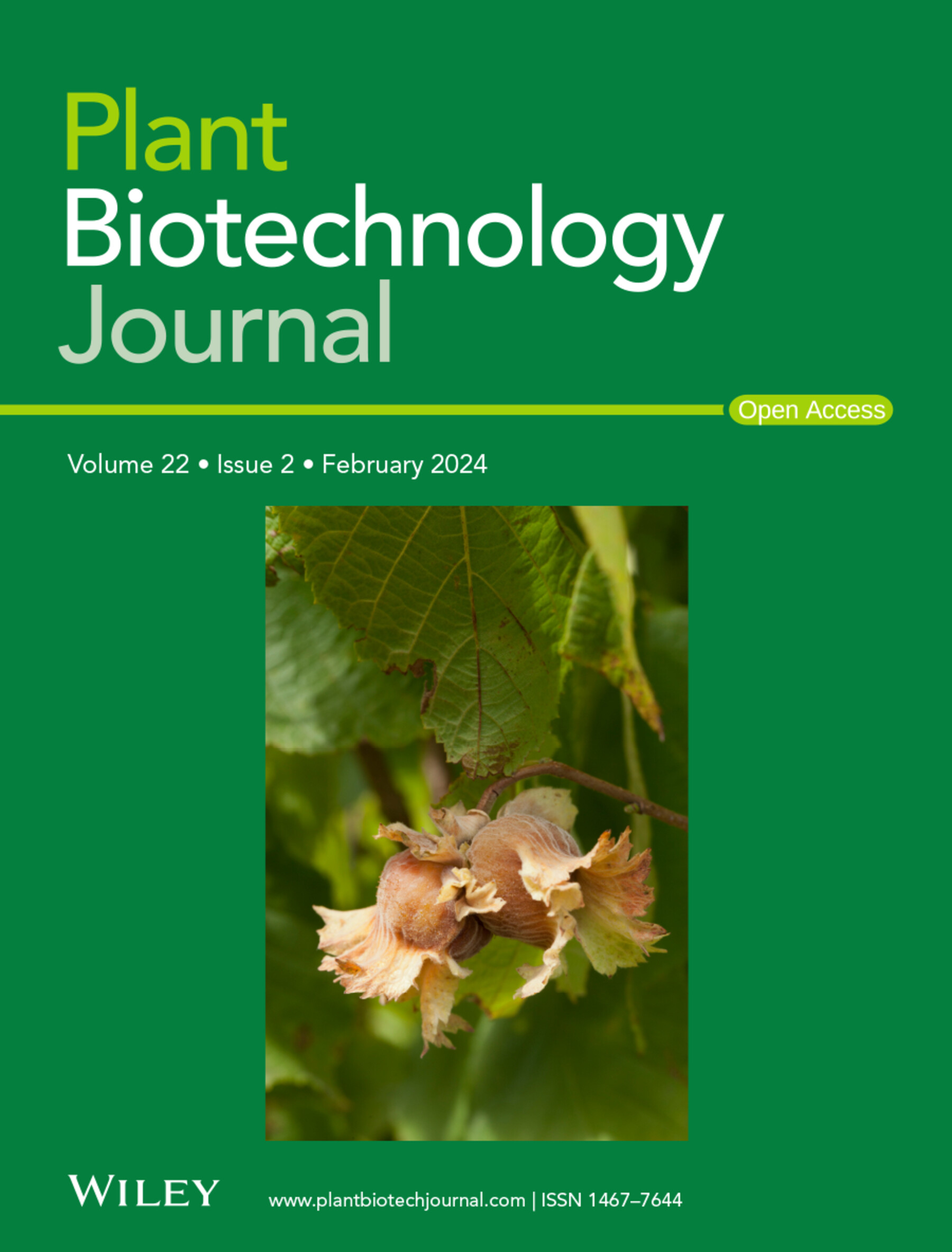TCP19通过调控水稻氮素吸收和信号传导调控水稻对氮依赖性纹枯病的敏感性。
IF 10.1
1区 生物学
Q1 BIOTECHNOLOGY & APPLIED MICROBIOLOGY
引用次数: 0
摘要
过量施氮可提高水稻产量,但增加病害严重程度。然而,潜在的分子机制尚不清楚。在此,我们对氮和茄茄调控的转录组进行了比较分析,并确定了氮利用效率(NUE)的关键调控因子TEOSINTE BRANCHED, CYC, PCF 19 (TCP19),作为氮代谢与鞘枯病(ShB)调控之间的潜在联系。用番茄红霉接种tcp19和tcp19 OXs后发现,tcp19对ShB抗性具有不依赖于氮条件的负调控作用。TCP19的表达在中氮(MN)条件下被抑制,而在高氮(HN)条件下被诱导。此外,TCP19直接激活密立穗1 (DEP1),同时抑制硝酸盐转运蛋白1.1 1b (nrt1.1 1b)、铵转运蛋白1;2 (AMT1;2)和致病相关的1b (PR1b)。值得注意的是,HN诱导的TCP19进一步强化了这一调控。光敏色素相互作用因子样蛋白15 (PIL15)是一个TCP19相互作用因子,可直接激活DEP1和AMT1;2,同时抑制NRT1.1B。此外,关键的氮信号调节因子IDD10与TCP19和PIL15相互作用,抑制TCP19和PIL15对DEP1的激活。有趣的是,DEP1与IDD10竞争性地相互作用以释放TCP19和PIL15。总的来说,我们的研究结果阐明了TCP19调控水稻ShB抗性中氮信号的机制,强调了HN条件下TCP19- pr1b信号是导致疾病严重程度增加的关键因素。本文章由计算机程序翻译,如有差异,请以英文原文为准。
TCP19 regulates nitrogen-dependent sheath blight susceptibility by modulating nitrogen uptake and signalling in rice.
The excessive application of nitrogen fertilization improves rice yield, but increases disease severity. However, the underlying molecular mechanisms remain unclear. Here, we conducted a comparative analysis of nitrogen- and R. solani-regulated transcriptomes and identified TEOSINTE BRANCHED, CYC, PCF 19 (TCP19), that was a key regulator of nitrogen use efficiency (NUE), as a potential link between nitrogen metabolism and sheath blight (ShB) regulation. Inoculation of tcp19 and TCP19 OXs with R. solani revealed that TCP19 negatively regulated ShB resistance independent of nitrogen conditions. TCP19 expression was suppressed under moderate nitrogen (MN) but induced under high nitrogen (HN) conditions. Furthermore, TCP19 directly activated Dense and Erect Panicle 1 (DEP1) while repressing nitrate transporter 1.1B (NRT1.1B), ammonium transporter 1;2 (AMT1;2) and pathogenesis-related 1b (PR1b). Notably, TCP19 induced by HN conditions further strengthened this regulation. Phytochrome interacting factor like protein 15 (PIL15), a TCP19 interactor, directly activated DEP1 and AMT1;2 while repressing NRT1.1B. Additionally, the key nitrogen signalling regulator Indeterminate domain 10 (IDD10) interacted with both TCP19 and PIL15 and inhibited DEP1 activation by TCP19 and PIL15. Interestingly, DEP1 competitively interacted with IDD10 to release TCP19 and PIL15. Overall, our findings elucidate the mechanisms by which TCP19 regulates nitrogen signalling in rice ShB resistance, highlighting TCP19-PR1b signal under HN conditions as a key factor contributing to increased disease severity.
求助全文
通过发布文献求助,成功后即可免费获取论文全文。
去求助
来源期刊

Plant Biotechnology Journal
生物-生物工程与应用微生物
CiteScore
20.50
自引率
2.90%
发文量
201
审稿时长
1 months
期刊介绍:
Plant Biotechnology Journal aspires to publish original research and insightful reviews of high impact, authored by prominent researchers in applied plant science. The journal places a special emphasis on molecular plant sciences and their practical applications through plant biotechnology. Our goal is to establish a platform for showcasing significant advances in the field, encompassing curiosity-driven studies with potential applications, strategic research in plant biotechnology, scientific analysis of crucial issues for the beneficial utilization of plant sciences, and assessments of the performance of plant biotechnology products in practical applications.
 求助内容:
求助内容: 应助结果提醒方式:
应助结果提醒方式:


